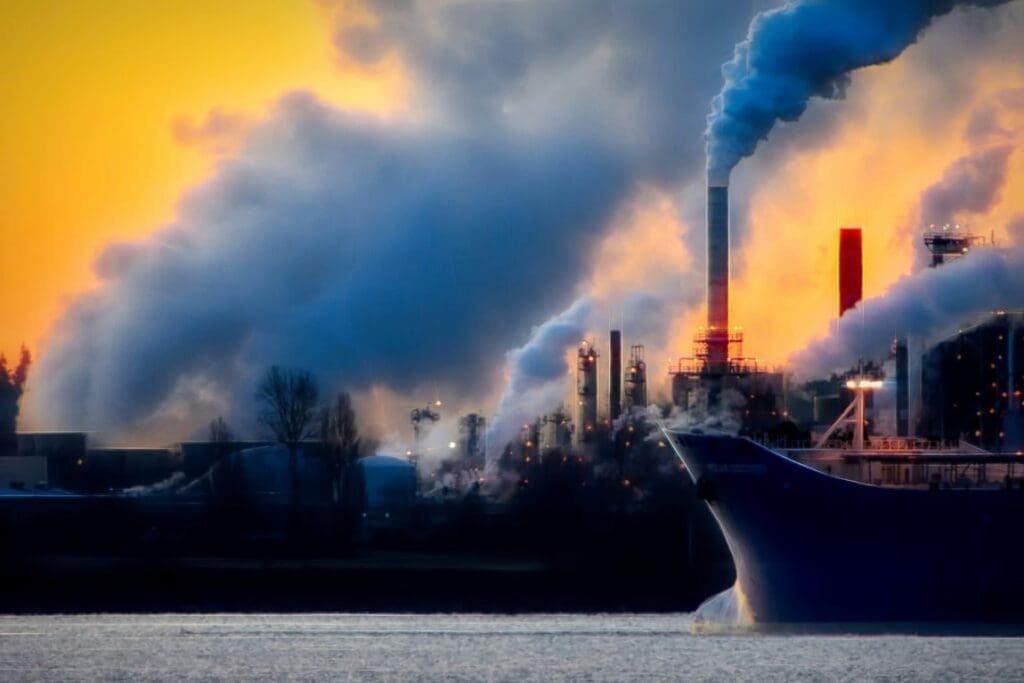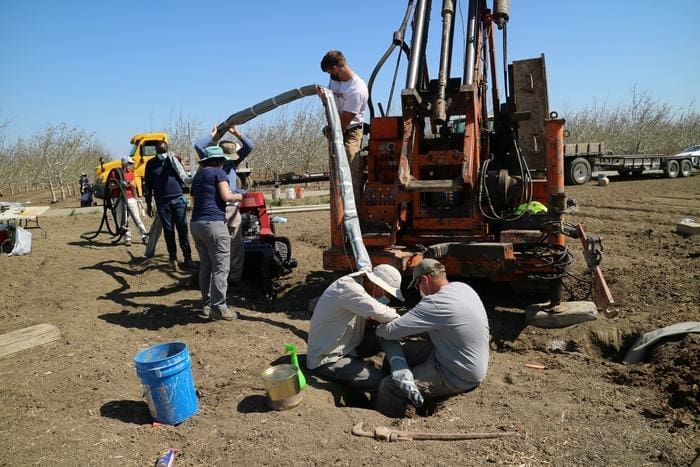Air pollution exposure may be associated with eczema
Data from hundreds of thousands of U.S. adults suggests that each zip code increase of 10 µm/m3 in PM2.5 levels is associated with a doubling in eczema rates among residents.
People living in areas with higher levels of air pollution are more likely to have eczema, according to a new study published in the open-access journal PLOS ONE by Dr. Jeffrey Cohen of Yale School of Medicine, USA.

The prevalence of eczema has increased globally with industrialization, suggesting a possible contribution from environmental factors. In the new study, researchers used data from the U.S. National Institutes of Health All of Us Research Program, covering hundreds of thousands of U.S. adults.
The current study included 286,862 people for whom there was available demographic, zip code and electronic health record data.
Overall, 12,695 participants (4.4%) were diagnosed with eczema. After controlling for demographics and smoking status, people with eczema were more likely to live in zip codes with high levels of fine particulate matter, or PM2.5, in the air. For every increase of 10 µm/m3 in average PM2.5 air pollution in their zip code, people were more than twice as likely to have eczema.
The authors conclude that increased air pollution, as measured by PM2.5, may influence the risk of developing eczema, likely through its effects on the immune system.
The authors add: “Showing that individuals in the United States who are exposed to particulate matter are more likely to have eczema deepens our understanding of the important health implications of ambient air pollution.”
Journal Reference:
Chen GF, Hwang E, Leonard CE, Cohen JM, ‘Association between fine particulate matter and eczema: A cross-sectional study of the All of Us Research Program and the Center for Air, Climate, and Energy Solutions’, PLoS ONE 19 (11): e0310498 (2024). DOI: 10.1371/journal.pone.0310498
Article Source:
Press Release/Material by PLOS
Up to 94% of Amazonian land might become unsuitable for the Brazil nut tree by 2100
Climate change is among the principal threats to global terrestrial biodiversity, especially to megadiverse ecosystems such as the Amazon rainforest. In this study, we investigate how it could affect an iconic forest species – Bertholletia excelsa – (the Brazil nut) which has values in multiple dimensions in an Amazonian context.
We used an ensemble from various distribution modeling methods designed for four different climate scenarios from CMIP6 by the end of the century. Then, we simulate how spatial dynamics under climate change, including explicitly dispersal events, can affect the persistence, colonization, and potential extinction of Bertholletia excelsa in the future.
Our results show that by the end of the century there would be a generalized loss of suitability on the Amazon biome, regardless of the climate scenario evaluated, which could promote a significant loss (up to 94%) of the area available for the species via extinction. Our results also show that, in the future, the species would colonize higher altitudes in search of favorable conditions for its survival.
Finally, we detected that areas that had previously become unsuitable because of climate change would have favorable conditions by the end of the century. Such an outcome could be useful in fostering an active restoration agenda that can mitigate the negative effects of climate change on species in this study.
Journal Reference:
Anjos LJS, Gonçalves GSR, Dutra VAB, Rosa AG, Santos LB, Barros MNR, et al. ‘Brazil nut journey under future climate change in Amazon’, PLoS ONE 19 (11): e0312308 (2024). DOI: 10.1371/journal.pone.0312308
Article Source:
Press Release/Material by PLOS
Young coral use metabolic tricks to resist bleaching
Coral larvae reduce their metabolism and increase nitrogen uptake to resist bleaching in high temperatures, according to a study published in the open-access journal PLOS Biology by Ariana S. Huffmyer of the University of Washington, US, and colleagues.
High ocean temperatures cause coral bleaching, which results from the disruption of the relationship between corals and their symbiotic algae, an increasing concern as global temperatures rise. However, relatively little research has examined the effects of high temperatures during early life stages of corals.
In this study, Huffmyer and colleagues exposed coral larvae to high temperatures at the Hawai‘i Institute of Marine Biology. For three days during their first week of development, the larvae and their algal symbionts were treated to temperatures 2.5 degrees Celsius above ambient temperature, similar to expected changes in seawater due to climate change.

The coral larvae showed no signs of bleaching in the heated water, and they were able to maintain rates of algal photosynthesis and the supply of carbon-based nutrition from the algae to the host. However, there was a 19% reduction in coral metabolism, as well as increased uptake and storage of nitrogen by the coral, both of which are apparent strategies that improve coral survival.
Reduced metabolism allows the coral to conserve energy and resources, also seen in adult corals during bleaching. The change in nitrogen cycling seems to be an adaptation by the coral to limit the amount of nitrogen available to the algae, thus preventing algal overgrowth and the destabilization of the coral-algae relationship.
It remains unclear how effective these strategies are at higher temperatures and for longer durations. Further research into the details and limitations of coral reaction to high temperatures will provide crucial knowledge for predicting coral response and protecting coral reefs as global temperatures continue to rise.
The authors add: “This research reveals that coral larvae must invest in their nutritional partnership with algae to withstand stress, offering key insights into strategies to avoid bleaching in earliest life stages of corals.”
Journal Reference:
Huffmyer AS, Ashey J, Strand E, Chiles EN, Su X, Putnam HM, ‘Coral larvae increase nitrogen assimilation to stabilize algal symbiosis and combat bleaching under increased temperature’, PLoS Biology 22 (11): e3002875 (2024). DOI: 10.1371/journal.pbio.3002875
Article Source:
Press Release/Material by PLOS
Climate change threatens key ocean plankton groups
According to a recent study published in Nature, many planktonic foraminifera species may face unprecedented environmental conditions by the end of this century, potentially surpassing their survival thresholds.
Planktonic foraminifera are single-celled organisms living in seawater, many of which carry a calcium carbonate shell. In tropical regions, the changing environmental conditions could trigger further extinctions, impacting marine ecosystems and the ocean’s carbon storage capacity.
An international team involving scientists from France, Germany, the Netherlands, Japan, and Spain analyzed nearly 200,000 datasets since 1910 to examine their response of planktic foraminifers to climate change.
The research shows that many species are migrating poleward towards cooler waters, at rates up to 10 kilometers per year. The data also reveal that some species have migrated deeper into the ocean to escape the rising surface temperatures.
Despite these shifts, foraminifera populations have declined by 25 % over the past 80 years. Tropical species experienced the biggest losses because the intense warming in these regions disrupts their reproductive cycles. The rising CO₂ levels and ocean acidification also reduce the formation of calcium carbonate (CaCO₃) from which foraminifera build their shells. Since the empty shells of deceased plankton sink to the seafloor, less carbon is stored when shell production decreases.
Sonia Chaabane, the study‘s lead author and researcher at CEREGE and the Max Planck Institute for Chemistry, emphasized the implications of the findings: “Our data show that planktonic foraminifera, which play a crucial role in the ocean’s carbon cycle, are struggling to survive in a rapidly changing climate. These organisms are like sentinels, warning us of the drastic effects that warming and acidification have on marine ecosystems.”
Complex interactions between climate and ecosystems are likely to be better understood as a whole through bioindicators like foraminifera rather than through individual measurements. “In view of advancing climate change, researchers are faced with the question of adaptation strategies individual species of planktonic foraminifera will develop in the near future” says Ralf Schiebel from the Max Planck Institute for Chemistry.
Journal Reference:
Chaabane, S., de Garidel-Thoron, T., Meilland, J. et al. ‘Migrating is not enough for modern planktonic foraminifera in a changing ocean’, Nature (2024). DOI: 10.1038/s41586-024-08191-5
Article Source:
Press Release/Material by Max Planck Institute for Chemistry
Extreme weather accelerates nitrate pollution in groundwater
Extreme weather spurred by climate change, including droughts and heavy rains, may increase the risk of nitrates from fertilizers ending up in groundwater, according to a recent study from researchers at the University of California, Davis.
The study found heavy rains after a drought caused nitrates to seep 33 feet under farm fields in as little as 10 days. The study was published in Water Resources Research.
“The conventional wisdom was that it could take several weeks to years for nitrates to move from the crop root zones to reach groundwater,” said corresponding author Isaya Kisekka, a professor in the Departments of Land, Air and Water Resources and Biological and Agricultural Engineering. “We found these extreme events, such as California’s atmospheric rivers, are going to move nitrate more quickly.”

In this study, different methods were used to measure how much nitrate, a component of nitrogen fertilizer, was seeping down through the soil in a tomato and cucumber crop near Esparto, California. Scientists conducted their research from 2021 until 2023 when California was experiencing periods of drought followed by atmospheric rivers. They measured nitrate during both the growing seasons and the rainy seasons.
Drought can leave more nitrogen in soil
Previous studies have shown about 40% of nitrogen fertilizer used for vegetables isn’t absorbed by the plants but remains in the soil. During droughts, crops don’t use nitrogen efficiently, leading to excess nitrogen in the soil. This study found that if a drought is then followed by heavy rainfall, that sudden burst of water causes nitrate to seep in groundwater more quickly.
The nitrate concentration in the shallow groundwater exceeded the U.S. Environmental Protection Agency maximum contaminant level of 10 milligrams per liter for drinking water.
“In California, we often say we swing between droughts and floods,” said Kisekka. “These extreme events that come with climate change are going to make the risk of these chemicals ending up in our drinking water much more severe.”
Groundwater is the primary source of drinking water for most of California’s Central Valley. In some regions, such as the Tulare Lake Basin, nearly one-third of drinking and irrigation wells exceed the EPA’s safe nitrate level. High nitrate levels in drinking water can increase health risks, especially for young children. It may also increase the risk of colorectal cancer.
Journal Reference:
Iael Raij-Hoffman, Ofer Dahan, Helen E. Dahlke, Thomas Harter, Isaya Kisekka, ‘Assessing Nitrate Leaching During Drought and Extreme Precipitation: Exploring Deep Vadose-Zone Monitoring, Groundwater Observations, and Field Mass Balance’, Water Resources Research 60, 11, e2024WR037973 (2024). DOI: 10.1029/2024WR037973
Article Source:
Press Release/Material by Amy Quinton | University of California – Davis
Featured image credit: Gerd Altmann | Pixabay




